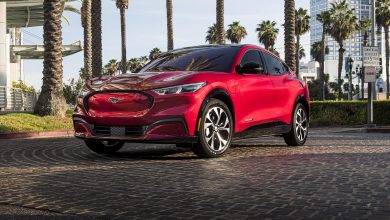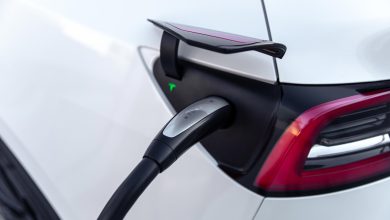
As the world seeks to combat climate change, increasing the electrification of vehicles and the percentage of electricity generated from renewable sources has become crucial. However, projections have shown that these trends could lead to costly new power plants to meet peak loads in the evening when cars are plugged in after the workday. Overproduction of power from solar farms during the daytime can also waste valuable electricity generation capacity. A new study by MIT researchers shows that it is possible to mitigate these problems without using advanced technological systems of connected devices and real-time communications, which could add to costs and energy consumption.
The researchers found that encouraging the strategic placement of charging stations for electric vehicles (EVs), rather than allowing them to be installed haphazardly, and setting up systems to initiate car charging at delayed times could make all the difference. The study, published in the journal Cell Reports Physical Science, analyzed data from two sample cities: New York and Dallas. The data, collected from various sources, including anonymized records from onboard devices in vehicles and surveys, showed the times of day cars were used and for how long, and how much time the vehicles spent at different types of locations – residential, workplace, shopping, entertainment, etc.
The research showed that better availability of charging stations at workplaces could help to soak up peak power being produced at midday from solar power installations, which might otherwise go to waste. If unmitigated, the evening peaks in electric vehicle charging demand could require installing upwards of 20% more power-generation capacity, the researchers say. Thus, workplace chargers can provide a double benefit, reducing the evening peak load from EV charging and making use of solar electricity output.
Meanwhile, with delayed home charging, each electric car charger could be accompanied by a simple app to estimate the time to begin its charging cycle so that it charges just before it is needed the next day. Unlike other proposals that require centralized control of the charging cycle, such a system needs no inter-device communication of information and can be preprogrammed – and can accomplish a significant shift in the demand on the grid caused by increasing EV penetration. The reason it works so well, according to Jessika Trancik, a professor at MIT’s Institute for Data, Systems, and Society, is because of the natural variability in driving behaviors across individuals in a population.
The researchers emphasized that it is not just charging equipment in individual garages or parking areas that are needed, but also charging stations in on-street parking locations and in apartment building parking areas. According to Trancik, combining the two measures – workplace charging and delayed home charging – can reduce peak electricity demand, store solar energy, and conveniently meet drivers’ charging needs on all days.
Trancik added that the findings highlight the value of strategic charging location packages, and could offer guidance to policymakers on where to focus rules and incentives. “Given that there’s a lot of public money going into expanding charging infrastructure, how do you incentivize the location such that this is going to be efficiently and effectively integrated into the power grid without requiring a lot of additional capacity expansion?” she said.
The study found that delayed home charging could make a surprising difference. “It’s basically incentivizing people to begin charging later. This can be something that is preprogrammed into your chargers. You incentivize people to delay the onset of charging by a bit so that not everyone is charging at the same time, and that smooths out the peak.” Such a program would require some advance commitment on the part of participants, Trancik noted. “You would need to have enough people committing to this program in advance to avoid the investment in physical infrastructure. If you have enough people signing up, then you essentially don’t have to build those extra power plants.”
For example, the team found that encouraging the use of electric buses with large batteries can provide a significant benefit to the power system. During the day, these buses can absorb surplus solar power, while at night they can discharge their stored power to meet evening peak loads. This can be done without adding any new infrastructure, and instead by simply using the bus batteries as a flexible load.
Another important finding from the study is the need for charging infrastructure to be distributed equitably. The researchers found that people from lower-income areas and those who live in apartments are less likely to have access to EV charging infrastructure, which could further exacerbate existing inequalities. To address this, they suggest policies such as targeted incentives for charging infrastructure in these areas, or partnerships between utilities and community organizations to install charging stations in areas that are currently underserved.
Overall, the study shows that careful planning and strategic placement of EV charging infrastructure can help to avoid the need for costly new power plants, reduce peak demand on the grid, and make better use of renewable energy sources. By taking these steps, we can continue to promote the adoption of electric vehicles and combat climate change without adding unnecessary stress to our already strained power systems.
Related: UK Government Roll Out New Plan For Smart Electric Vehicle Charging
Sponsored by BulkVinyl





